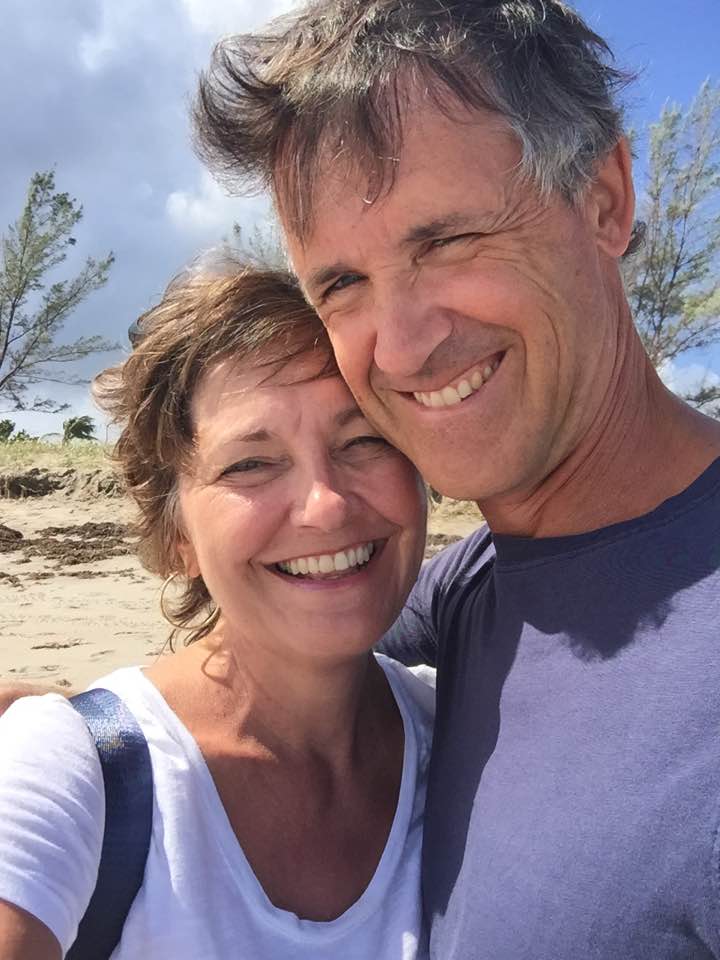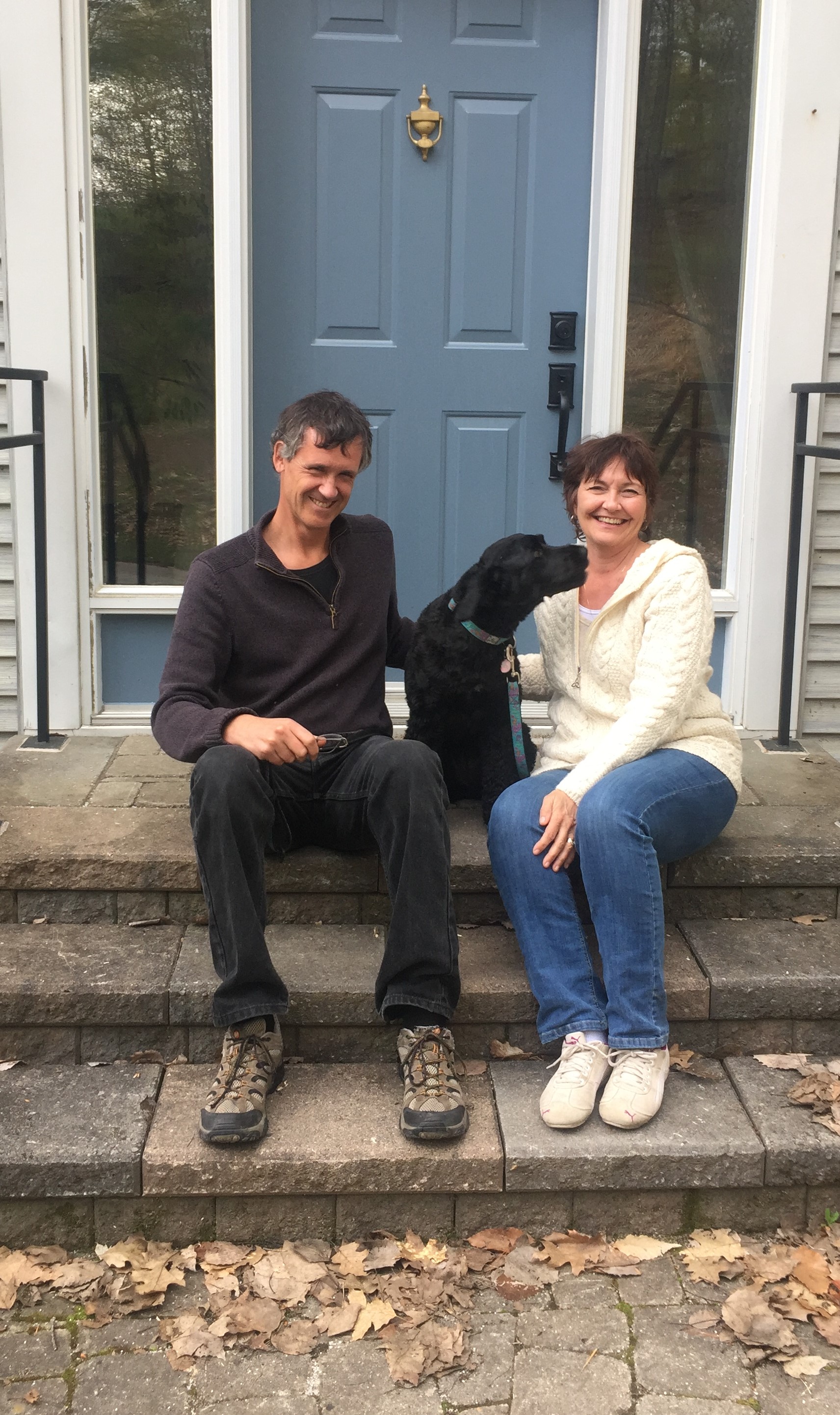What a difference a year makes!

Fearful Thinking
A few weeks ago, Adam and I went on a vacation to relax after a whirlwind year of moving to a new home in the country. As someone who enjoys blogging, I shut down completely due to the stress: I was overwhelmed with my emotions and was challenged with fearful thinking. With all the work involved in moving, I was also physically exhausted. Looking back over the past year, Adam and I are amazed at how well I—as a sufferer of a mental illness—have coped. We knew it would be a difficult year for me, and if you have read Adam’s posts from May and June, you can see how at certain times he “managed” me (or didn’t).
For myself, this has been an exploration of my fears, which isn’t something new for me. In our book Bittersweet: Married to Mental Illness, Adam writes about how I’ve faced my fears of coming off of psychiatric medications, of my body image issues, and of letting go of a lifetime of unsuccessful dieting. But the fear of moving from our home of 25 years was bigger than all of those put together. The idea of moving stretched my mind to the max and my anxiety reached the heavens. My emotions frequently sent me to bed with sick headaches. What held me together was having my past experiences under my belt. I had proof that I could cope without psychiatric medications; I had proof that I could love my body after years of hating and loathing it; I had proof that I could turn around a lifetime of powerlessness over my food. I could look back and observe how absolutely frightening all of those challenges were and how I had made it safely to the other side. If I could do it then—with all the amazing tools I had discovered—I could do it now with this move.
Five Tools
Positive Thoughts
What tools am I talking about? The first tool is: I am not my mind. My mind is not in control of me; I am in command of my mind. I’ve learned that the mind will calm down when you think thoughts that the mind cannot argue with, thoughts that reflect our true nature. My favourite mantra is: “I am brilliant, I am amazing, I am the creator of my own existence, all that I am is love, all that I am I command, I am sufficient.” At night, when my anxiety interfered with me going to sleep, I would repeat this mantra, and it would help to calm my mind so that I could fall asleep easier. During times of extreme stress when I thought I was going to lose it, I used the words: “I choose to not struggle. Life is easy. I choose to make it easy.” With those simple phrases, I was able to open up and allow decisions to take place, rather than being in a tight, controlled state of fear and stuck in “decision paralysis.”
Comfort Foods
The second tool was knowing that food can be comforting during times of stress. For most of my life, I tried to avoid eating for comfort, because I believed that it was wrong and showed weakness. As a result of this deprivation—or diet mentality—whenever I would weaken and eat comfort foods, I would find myself in full-blown binges. I had an epiphany in 2010 when I read Susanna Dee’s non-dieting weight-loss book I’ve Tried It All! Now What?! in which she writes:
“From the moment we are born, we associate food with comfort and emotion. Breastfeeding is the epitome of correlating food with comfort and emotions. Eating is and was always meant to be a very sensual, pleasurable, nurturing and satisfying experience. For anyone to suggest other wise is nonsense.”
Susanna’s book, plus other non-dieting weight-loss books, made me realize that I can have my comfort foods without it leading to overeating or binge-eating. So, during this past year, food has been a huge stress reliever, but I’m still in my size-10 jeans.
Quality Foods
The third tool was my vitamins, spring water and eating organic foods whenever possible. Taking my vitamins was my #1 priority in the mornings, as my routine was out of whack and I knew that they would help keep my body in balance. Same with drinking spring water (or well water) and eating organic. Back in 2008, nutrition was my first step for regaining my wellness, and it has stayed with me ever since.
Some Exercise
You would think that exercise would have been my fourth tool, but with the stress of the move, I just couldn’t keep any routine going as we were so busy flipping our home to sell. I had to stop bellydance classes, and I stopped rebounding when the rebounder went into storage. However, the move was very physical and I certainly kept busy with decluttering, packing, unpacking and renovations. Whenever there was a chance to go for a walk, I took advantage of it. I might not have walked our dog, Kimy, as much as Adam, but I made an effort to get out and get some fresh air.
Faith
The fifth tool I had was “faith.” My spiritual path has lead me to understand that I’m here for a short time to experience what life has to offer, and I knew that this would be a neat thing to experience—no matter how it turned out. The spiritual “law of attraction” came into play many times, like when our closing date on our old home turned out to be Adam’s birthday, and the date of possession of our new home was on my birthday. A few months after living in our new home, I learned that my hairdresser of 3 years was the same hairdresser of the previous owner’s wife and had been for 30 years. These “coincidences” made us smile, and added spice to our move.
Even with those tools, there were many “pyjama days” when I was completely overwhelmed and I couldn’t get out of bed. There were many days when my emotions were frayed and I constantly bickered with Adam, but I held on to my past experiences and kept open to the possibilities in front of us. I took care of my health as best I could and continually said “yes” to life. Back from a relaxing vacation, we are now settled into our new home in the country. We are looking forward to enjoying our first winter here. What a difference a year makes! And what a difference your outlook on life can make.
Sara Hardy


